The printing industry is a typical manufacturing industry that follows a set process. It involves various complex and diverse steps, especially for large and medium-sized printing companies. Post-printing processes alone include tasks like hot stamping, embossing, die-cutting, and creasing. In recent years, as the market demands more diverse printing products and services, printing companies are exploring new technologies, concepts, and approaches like digitization and automation. They aim to improve their production processes, increase efficiency, and create smart factories.
Today, we'd like to introduce VisionNav's project in a leading printing company that focuses on enhancing logistics efficiency for their customers.
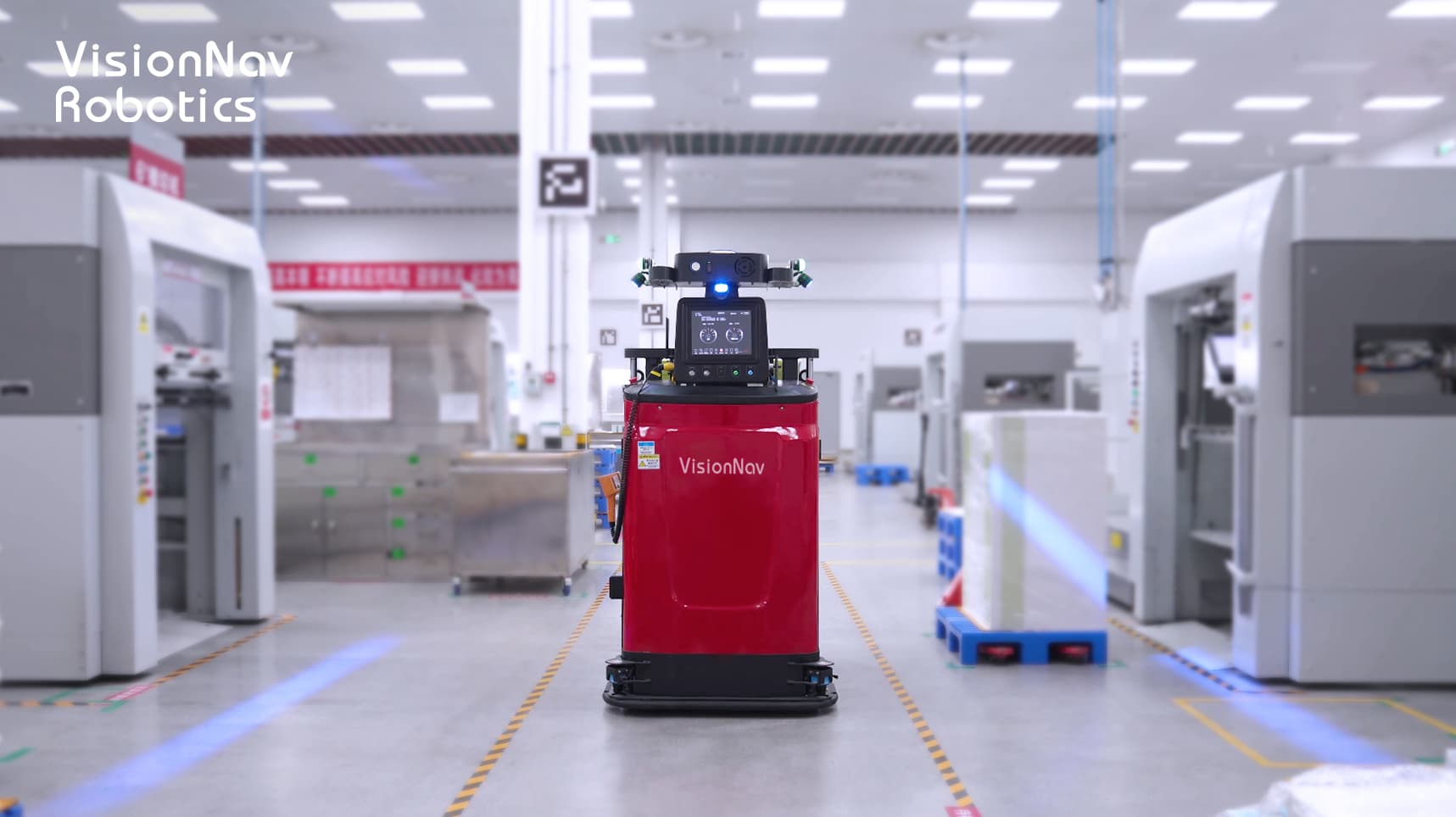
Project Overview
The client is a leading company in the printing industry, with their production base located in the Southwest region. The project involves multiple processes such as offset printing, screen printing, intaglio printing, and hot stamping. In different workshops, there are a large number of raw materials, semi-finished products, and finished products. The handling, distribution, and inventory management of these materials require precision and automation. Relying on manual operations is not only time-consuming but also inefficient and costly. The client aims to enhance the efficiency of material handling in the workshops by implementing VisionNav's internal logistics automation solution, thereby improving the overall level of factory intelligence.
Project Challenges
1. Diverse material types and multiple automation equipment: The client has multiple production lines that handle various types of printing products, ranging from raw materials and semi-finished products to finished goods. These materials include both conventional palletized items and non-palletized materials such as rolls of paper. Relying solely on manual handling and distribution is not only inefficient but also prone to errors.
2. Complex process flow across multiple workshops: The autonomous forklifts need to navigate through different workshops, such as the offset printing area, screen printing area, intaglio printing area, inkjet coding area, and hot stamping area. They must seamlessly connect multiple process steps and complete material distribution. With multiple workshops involved and long distances to cover, the autonomous forklifts may travel up to kilometers in a single operation.
3. Challenges in task allocation and vehicle scheduling: Managing task allocation and vehicle scheduling in multi-zone scenarios requires comprehensive consideration of factors such as the operational status of autonomous forklifts and the distances between task points. It is crucial to optimize task allocation, plan efficient operational paths, and maximize material handling efficiency, ultimately enhancing internal logistics efficiency.
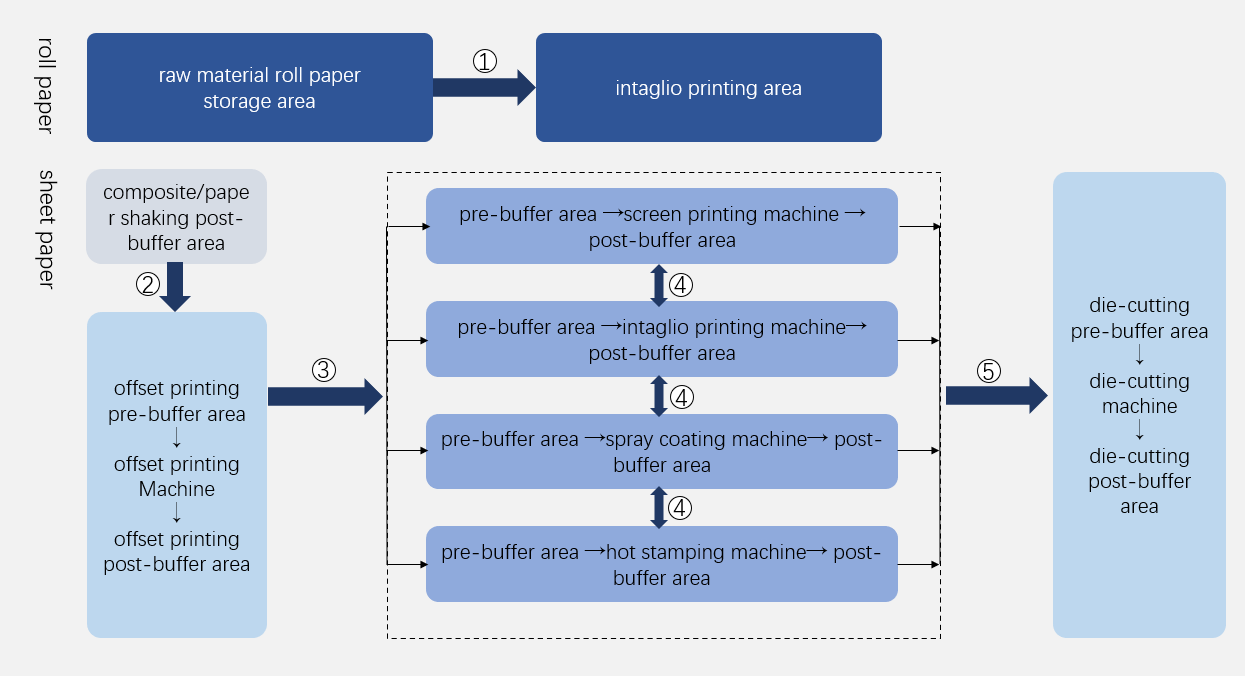
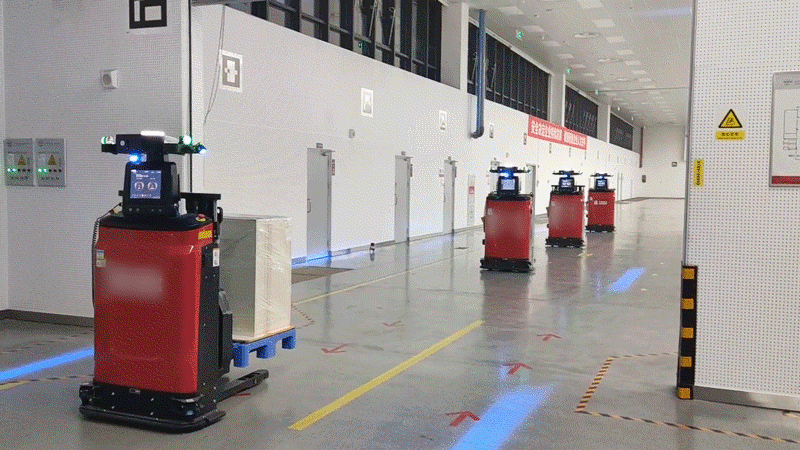
Solution
VisionNav introduced an internal logistics automation solution for the client, which includes over 10 units of VNSL14 pallet stacker autonomous forklifts and the RCS2.0 centralized control and scheduling system. The RCS2.0 system intelligently schedules and manages the unmanned forklifts throughout the entire factory, enabling seamless task allocation and material distribution between different process steps. This tight integration between processes improves efficiency and reduces labor costs, ultimately achieving factory intelligence and digital management.
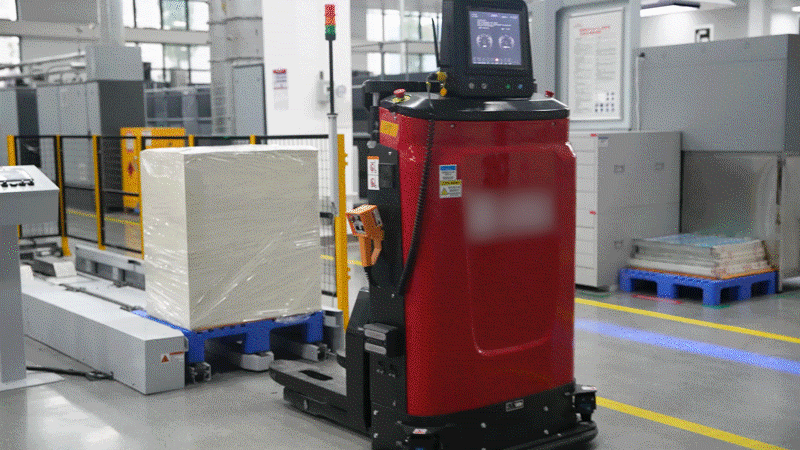
①The autonomous forklifts will transport the rolls of raw material paper from the storage area to the feeding point of the intaglio printing machine.
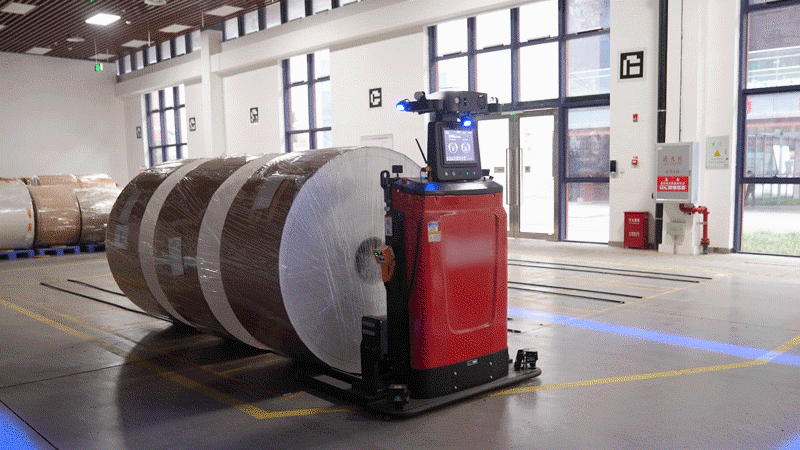
② The autonomous forklifts will move the semi-finished flat sheets of paper from the composite/paper shaking buffer area to the buffer area before the offset printing process. They will wait for the material to complete the offset printing process and then transport it to the buffer area after offset printing, where it awaits the next process.
③ After the completion of the offset printing process, the next step could be screen printing, intaglio printing, inkjet coding, or hot stamping. There is no specific order among these four processes. The autonomous forklifts will transport the semi-finished products from the buffer area after offset printing to the buffer area before screen printing/intaglio printing/inkjet coding/hot stamping, depending on the task requirements.
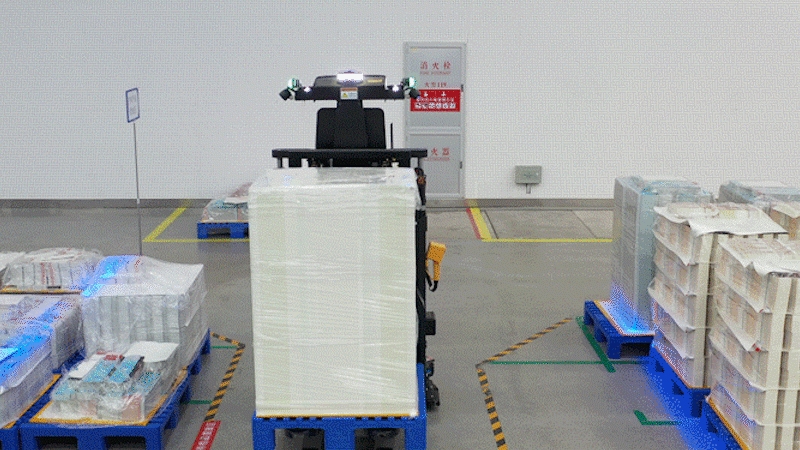
④ The materials between screen printing, intaglio printing, inkjet coding, and hot stamping can be interchanged. For example, after completing the screen printing process, the semi-finished products can be transported by the autonomous forklifts from the buffer area after screen printing to the buffer area before intaglio printing/inkjet coding/hot stamping. The same applies to other processes.
⑤ The autonomous forklifts will transport the semi-finished products from the buffer area after screen printing/intaglio printing/inkjet coding/hot stamping to the buffer area before die-cutting. They will wait for the material to complete the die-cutting process and then move it to the buffer area after die-cutting.
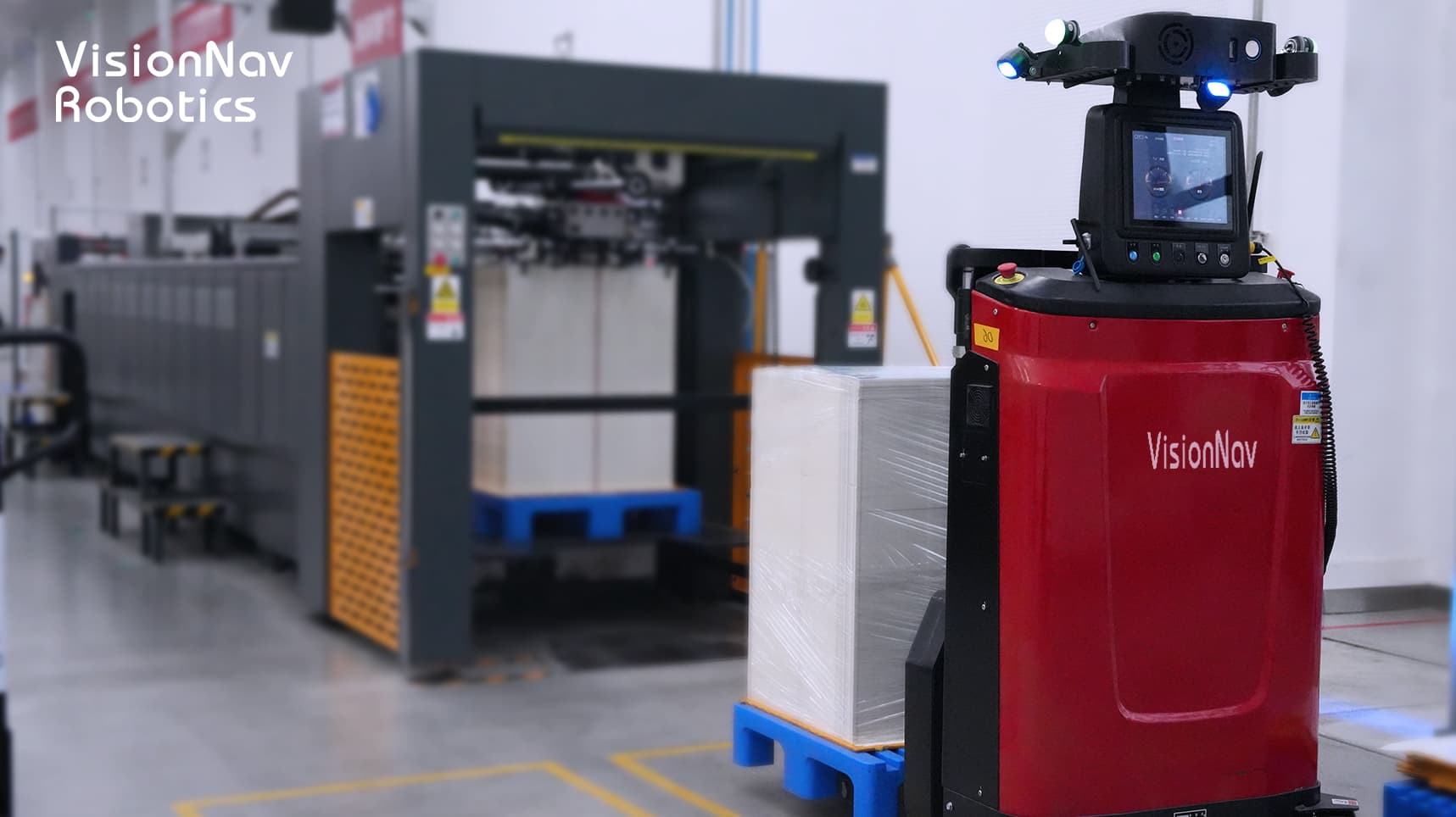
Project Highlights
1.Cross-workshop material distribution, efficient integration of multiple process steps.VisionNav
VisionNav has introduced over 10 units of VNSL14 autonomous forklifts, spanning multiple workshops and connecting the processes of offset printing, screen printing, intaglio printing, inkjet coding, hot stamping, and die-cutting. Through the RCS2.0 task allocation and path planning system, automatic material distribution between process steps is achieved, improving the efficiency and accuracy of material delivery. This results in tighter integration between workshop processes.
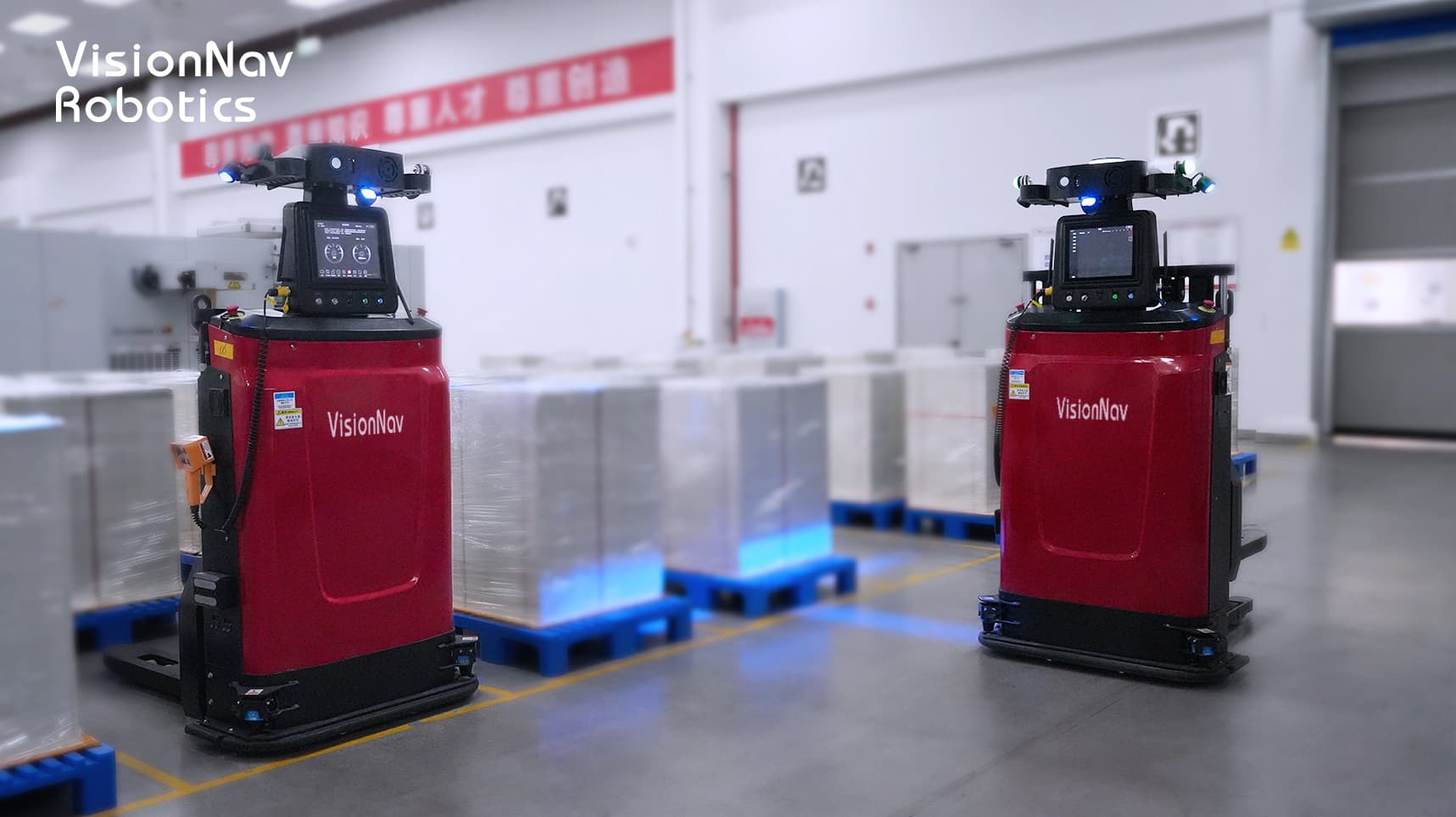
2.Multi-vehicle scheduling, stable operations, and comprehensive internal logistics solution.
VisionNav RCS2.0 system integrates with the client's system, connecting the unmanned forklifts with various automation equipment throughout the entire factory. Seamless integration with equipment such as roller shutter doors and conveyors is achieved during the operation of the autonomous forklifts. This integration enables the exchange of material information, which is automatically synchronized and updated in real-time, empowering the client to create an intelligent factory.
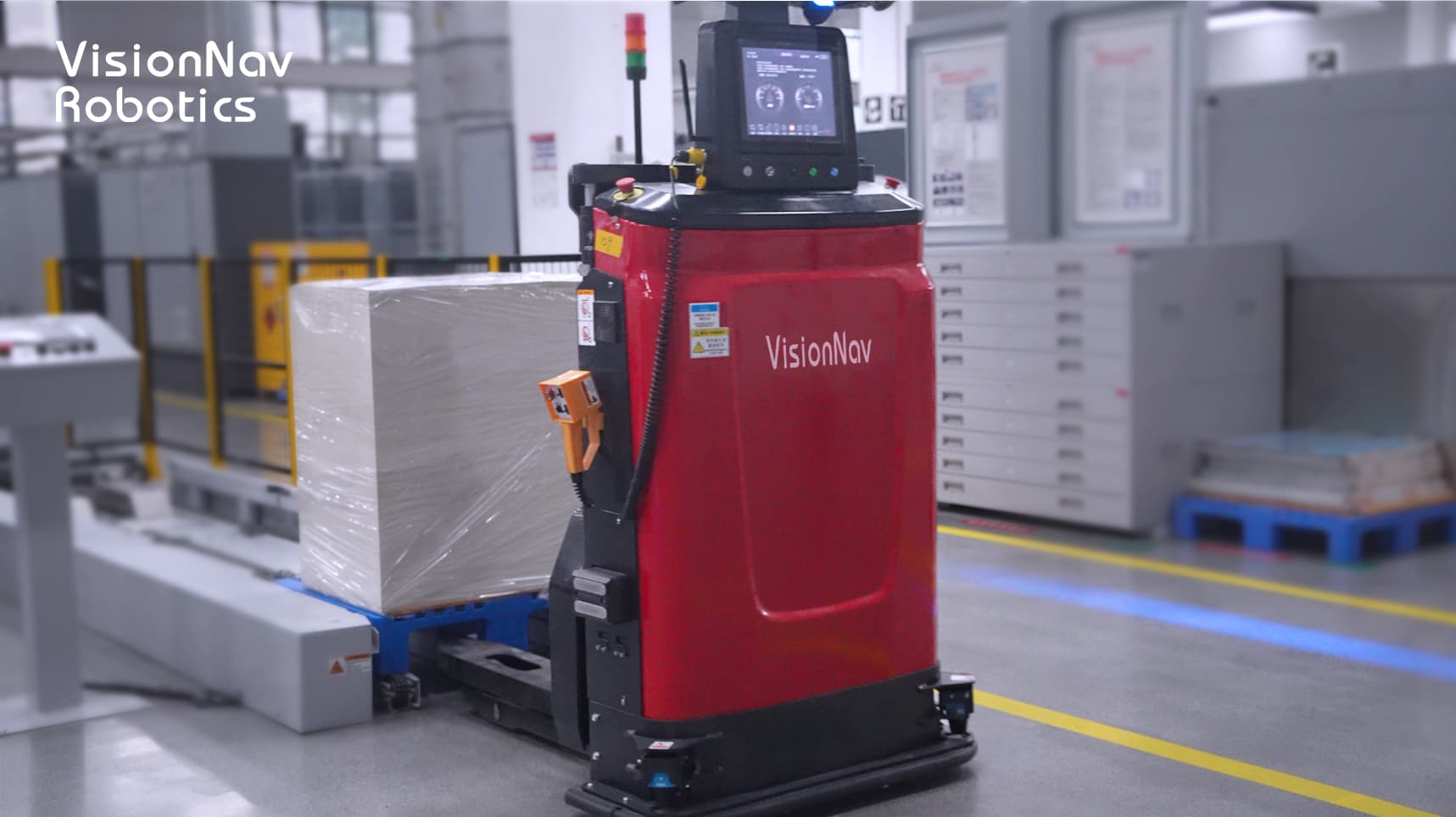
About VisionNav Robotics
VisionNav® Robotics is a global supplier of autonomous industrial vehicles and intralogistics automation solutions. Based on Machine Learning, Environmental Perception, Deep Machine Learning, and Servo Control technology, VisionNav has developed nine product series for full-stack scenarios to automate industry logistics. VisionNav has served more than 30 countries and deployed 350+ projects around the globe, and partners with 50+ Fortune 500 companies, covering auto manufacturing, tire, food, petrochemical, e-commerce, 3PL, pharmaceutical, and other industries.
Publish Contact
Iris Chen
xchen@visionnav.com